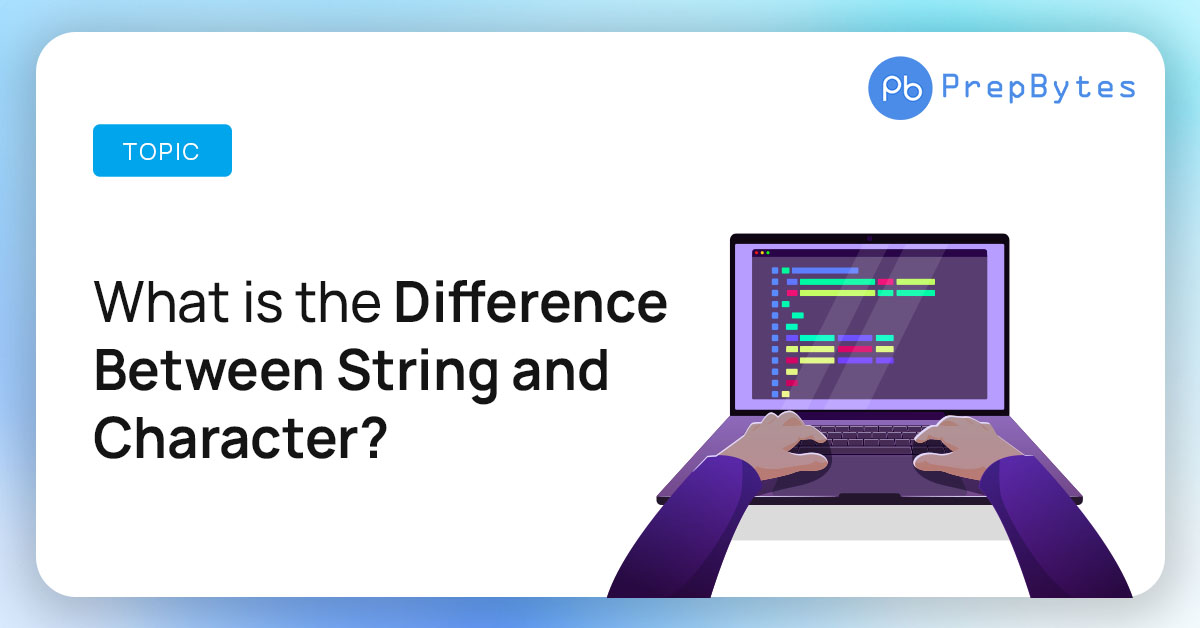
In the realm of programming languages, the terms "Strings" and "Characters" are frequently encountered, leading to confusion among many. However, fear not, as after reading this blog, you will gain a clear understanding of the distinction between these two concepts.
This blog will provide a concise overview of Strings, characters, and illuminate the dissimilarities that set them apart.
What is Character?
Characters in computer programming are straightforward alphabets like ‘a’, ‘b’, ‘c’, ‘d’, and so on, with one exception. Single-digit integers such as ‘0’, ‘1’, ‘2’, ‘3’, ‘4’, and special characters like ‘$’, ‘%’, ‘+’, ‘-‘, ‘*’, etc., are also considered characters. To assign them to a character type variable, you can simply enclose them in single quotes.
What is String?
Strings resemble sentences in the sense that they represent a sequence of characters consolidated into a single data type. Essentially, they consist of an "array of characters," forming a list of characters. Strings prove highly advantageous when conveying information from the program to the user. However, when it comes to storing data for the computer’s internal use, their utility diminishes.
Difference between string and Character
Below is a tabular comparison between strings and characters:
| Feature | String | Character |
|---|---|---|
| Definition | A sequence of characters treated as a single data type. | A single character represented by a character type. |
| Representation | Enclosed within double quotes ("example"). | Enclosed within single quotes (‘e’). |
| Data Type | Typically considered an array of characters. | Treated as a single element. |
| Length | Variable length – can contain multiple characters. | Fixed length – contains only one character. |
| Usage | Used for storing text and sentences. | Used for holding single characters or symbols. |
| Example | "Hello, World!" | ‘H’, ‘e’, ‘l’, ‘l’, ‘o’, etc. |
In summary, strings are collections of characters represented as a single data type, while characters are single elements used for individual characters or symbols. Strings are ideal for storing text, while characters are used for handling single characters or special symbols
Conclusion
In programming languages, understanding the difference between strings and characters is crucial for effective data handling and manipulation. Strings are sequences of characters, treated as a single data type, and are useful for storing text and sentences. On the other hand, characters are individual elements representing single letters, digits, or special symbols, enclosed within single quotes.
Frequently Asked Questions (FAQs) related to the difference between string and character:
1. Can strings contain special characters or digits?
Yes, strings can contain special characters, digits, and any combination of characters to form sentences or textual data.
2. How do you declare a character in a programming language?
Characters are declared by enclosing them in single quotes. For example: ‘A’, ‘7’, ‘$’, etc.
3. What is the main purpose of using strings in programming?
Strings are primarily used for storing and manipulating text-based data, such as sentences, words, and textual information.
4. Can a string have a variable length?
Yes, strings have a variable length, meaning they can contain multiple characters, making them flexible for accommodating different amounts of text.
5. Are strings mutable in programming?
In many programming languages, strings are immutable, meaning their contents cannot be changed after creation. However, new strings can be created with modified contents.
6. Can characters be used to represent numbers or symbols?
Yes, characters can represent not only letters but also digits, symbols, or any other single textual element that can be represented with a single character.
7. How are strings and characters stored in memory?
Strings are typically stored as arrays of characters, where each element represents a character in the sequence. Characters are stored as single elements in memory.


